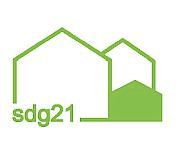 The Wealth Redistribution Alliance is focussing on social justice in the 2017 election year and is launching the campaign "Redistribute wealth - a fair country for all!" just in time for the Bundestag election campaign. In total 30 organisations, from trade unions, welfare and youth associations to migrant and environmental organisationshave joined forces in the alliance, which made its first public appearance today at the Federal Press Conference in Berlin. The strategic aim is to place tax and redistribution policy at the centre of the election campaign alongside the issue of social justice. Among other things, they are calling for greater taxation of financially strong companies as well as large assets, incomes and inheritances.
The Wealth Redistribution Alliance is focussing on social justice in the 2017 election year and is launching the campaign "Redistribute wealth - a fair country for all!" just in time for the Bundestag election campaign. In total 30 organisations, from trade unions, welfare and youth associations to migrant and environmental organisationshave joined forces in the alliance, which made its first public appearance today at the Federal Press Conference in Berlin. The strategic aim is to place tax and redistribution policy at the centre of the election campaign alongside the issue of social justice. Among other things, they are calling for greater taxation of financially strong companies as well as large assets, incomes and inheritances.
"The social divide has reached an intolerable level," said Frank Bsirske, Chairman of the United Services Union (ver.di). Social inequality, insecurity and injustice have been increasing worldwide and in Germany for decades. The key to a fairer and better policy for all is a turnaround in tax policy. Millionaires and billionaires should therefore be asked to contribute more to the financing of public tasks, said Bsirske.
The enormous private wealth contrasts with massive public poverty, which is clearly visible in more and more municipalities. "Germany is running on empty. In many places, spending on culture, social affairs and education is being cut beyond the pain threshold due to financial hardship. A solidary tax and financial policy is ultimately the acid test and the test of credibility for anyone who runs on the promise of a good welfare state and more social justice," says Ulrich Schneider, Managing Director of the Paritätischer Gesamtverband.
"The increasing social divide in society is also evident on the housing markets. We need permanently priced social housing, at least an additional 80,000 a year, as well as a needs-based housing allowance and the assumption of actually appropriate housing costs in the standard rates of Hartz IV. This is another reason why financially strong corporations, large fortunes, billionaires and millionaires must contribute more than before to the costs of the common good. Redistributing wealth means creating tax justice, closing tax loopholes and drying up tax havens," says Ulrich Ropertz, Managing Director of the German Tenants' Association.
The unequal distribution of wealth goes hand in hand with unequal power relations worldwide and is therefore also a serious threat to social cohesion in Germany, warns the alliance. Barbara Eschen, spokesperson for the National Poverty Conference and Director of Diakonie Berlin-Brandenburg, emphasises: "Germany is a rich country. It is all the more scandalous that so many people in Germany are left behind because they are poor. The wealth in Germany must be redistributed. And there must finally be an end to playing different groups of people in need off against each other."
The action alliance also sees its demands strengthened by the current poverty and wealth report by the German government, in which the government itself warns of an excessive division in society and admits that employees often feel that their efforts are not sufficiently respected, that the long-term unemployed are not benefiting proportionately from the German job boom and that the service sector is lagging behind in terms of wage increases. "We share this diagnosis. Now we need to turn words into action. If we want to combat poverty, we must strengthen collective bargaining agreements and stabilise and gradually raise the statutory pension," said ver.di Chairman Frank Bsirske.
Website: www.reichtum-umverteilen.de
Download press kit
Source PM:
www.reichtum-umverteilen.de/...buendnis-umverteilen-stellt-forderungen-zur-bundestagswahl-vor
Keywords:
Stakeholders



